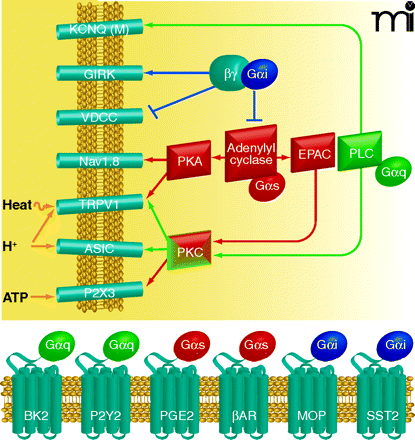
- Institution: Stanford Univ Med Ctr Lane Med Lib/Periodical Dept/Rm L109
- Sign In as Member / Individual
In Search of Analgesia: Emerging Poles of GPCRs in Pain

GPCR modulation of nociceptor excitability. GPCR activation, in response to tissue damage or inflammatory mediators, can often result in the covalent modification (e.g., phosphorylation) of ion channels; such channel modification can modulate important physiological properties of nociceptors. A few examples of GPCRs and ion channels that are involved in the modulation of nociceptor activity are shown (see text for details); many other GPCRs have also been implicated in this process. GPCRs also regulate functional properties of neurons at the level of transcription (not shown here). Channels that are regulated by GPCR activation include the ligand-gated ion channels TRPV1, ASICs, and P2X3; voltage-dependent channels including tetrodotoxin-resistant sodium channels Nav1.8 and Nav1.9; voltage-dependent calcium channels; KCNQ channels mediating the M-type potassium current; and G protein–activated potassium channels (GIRK). GPCR-mediated pathways regulating channel function represent an active area of investigation.


